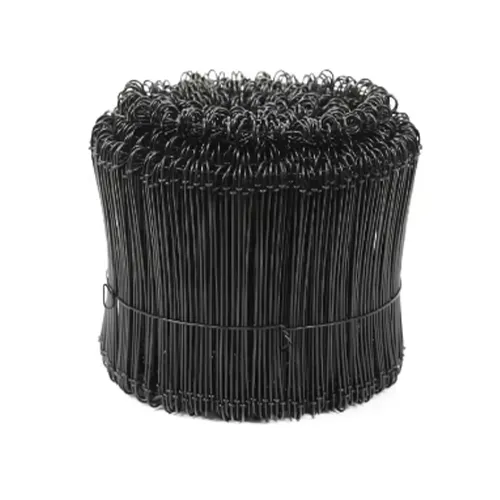-
 Phone:
Phone: -
 Email:
Email:

Wire Mesh Rock Retaining Walls for Sustainable Landscape Design and Erosion Control Solutions
The Benefits of Wire Mesh Rock Retaining Walls A Comprehensive Overview
Wire mesh rock retaining walls have emerged as an effective solution for various landscaping, erosion control, and structural needs. These walls serve multiple purposes, including soil stabilization, aesthetic enhancement, and providing support for steep slopes. In this article, we will explore the benefits of wire mesh rock retaining walls, their construction process, and their practical applications.
Understanding Wire Mesh Rock Retaining Walls
Wire mesh rock retaining walls consist of a strong steel mesh framework that holds together a varied selection of rocks or stones. This combination allows for the creation of a durable wall that can withstand significant pressure from behind, often caused by soil or water. The mesh acts as a supportive structure, while the rocks provide both functionality and visual appeal.
Benefits of Wire Mesh Rock Retaining Walls
1. Erosion Control One of the primary purposes of retaining walls is to combat erosion. Without proper stabilization, soil can wash away during heavy rain or flooding. Wire mesh rock retaining walls effectively hold the soil in place, preventing further erosion and maintaining the integrity of the landscape.
2. Aesthetic Appeal In addition to their functional advantages, wire mesh rock retaining walls can enhance the visual appeal of a property. The natural stones add texture and color, blending seamlessly with surrounding elements. Homeowners can choose from a variety of stones, allowing for a customized look that complements the existing landscape design.
3. Versatility Wire mesh rock retaining walls are highly adaptable and can be constructed in various shapes and sizes. Whether dealing with small garden terraces or larger commercial applications, these walls can be tailored to meet specific needs. They are equally effective on steep slopes and level ground.
4. Cost-Effectiveness Compared to traditional concrete or brick retaining walls, wire mesh rock walls can be more affordable. The materials required are often less expensive, and the installation process is generally quicker, reducing labor costs. This cost-effectiveness makes them an appealing option for budget-conscious homeowners.
5. Drainage Properties Proper drainage is crucial in retaining wall design, as trapped water can lead to damages or structural failure. The open framework of wire mesh allows water to pass through, reducing hydrostatic pressure behind the wall. This natural drainage capability helps to prolong the life of the wall while minimizing maintenance needs.
Construction Process
wire mesh rock retaining wall

Constructing a wire mesh rock retaining wall involves several essential steps
1. Site Preparation The first step is to assess the site and prepare the ground. This often includes clearing debris, leveling the area, and ensuring proper drainage channels are in place.
2. Footing Installation A solid base is crucial for the stability of the wall. Often, a trench is dug to create a footing where the wall's mesh framework will sit.
3. Framing the Wall The wire mesh is installed, ensuring that it is securely anchored. This provides the structure needed to hold the rocks in place.
4. Rock Placement Rocks are filled into the mesh, packed tightly to create a solid wall. The larger stones are typically placed at the bottom for stability, with smaller stones layered on top for a secure fit.
5. Finishing Touches Once the wall is complete, additional landscape elements such as soil, grass, or other plants can be added around the wall to enhance its look and integrate it into the surrounding environment.
Practical Applications
Wire mesh rock retaining walls are suitable for a variety of applications. Homeowners often use them in gardens or yards to create terraced levels, while commercial projects might require them for larger slope stabilization and erosion control efforts. They are also beneficial in agricultural settings, providing support for crops on sloped lands.
Conclusion
Wire mesh rock retaining walls offer an innovative and aesthetically pleasing solution to common landscaping and structural challenges. Their effective erosion control, versatility, cost-effectiveness, and natural drainage properties make them an excellent choice for both residential and commercial applications. As awareness of sustainable and visually appealing landscaping solutions grows, wire mesh rock retaining walls are likely to gain further popularity as a go-to option.
-
Wire Mesh for Every Need: A Practical SolutionNewsJul.25,2025
-
Steel Fences: Durable, Secure, and Stylish OptionsNewsJul.25,2025
-
Roll Top Fencing: A Smart Solution for Safety and SecurityNewsJul.25,2025
-
Cattle Farm Fencing Solutions for Maximum SecurityNewsJul.25,2025
-
Affordable Iron Binding Wire SolutionsNewsJul.25,2025
-
Affordable Galvanized Wire SolutionsNewsJul.25,2025
-
Wire Hanger Recycling IdeasNewsJul.25,2025








